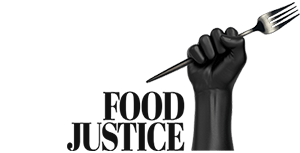
FOOD JUSTICE
Draft regulations aim to make warning labels on unhealthy foods mandatory by 2025

The Health Department has published a long-awaited draft of new regulations on labelling and advertising foods.
The draft regulations introduce a mandatory black-and-white warning-label system for pre-packaged foods that are high in sugar, salt and unhealthy fats, which are known to increase the risk of obesity, type 2 diabetes and some cancers.
The warning labels will also be mandatory for foods and drinks containing artificial (non-nutritive) sweeteners, which were recently shown to be harmful to gut bacteria and in the long term are associated with increased risk of obesity, type 2 diabetes and cardiovascular diseases.
Nutritionists and epidemiologists have been eagerly awaiting the new regulations, because of South Africa’s spiralling rates of obesity and non-communicable diseases often triggered by overweight and obesity, such as diabetes and cardiovascular disease.
Nearly 80% of pre-packaged foods on South African supermarket shelves are highly processed or ultraprocessed, containing excessive amounts of added sugars, salt, unhealthy fats and chemical additives that make them irresistibly tasty. Because these foods make up large proportions of many South Africans’ diets, they are also “fuelling new levels of death and disease with almost no regulation to stand in their way”, Maverick Citizen wrote in January 2022.
Soon there will be regulations to stand in their way.
Once draft R2986 is approved: pre-packaged foods will need to carry a front-of-pack warning label if they contain more than 10g of total sugar per 100g or more than 5g per 100ml, more than 4g of saturated fatty acids per 100g or 3g per 100ml, and more than 400mg of sodium per 100g or 100mg per 100ml. Any amount of artificial sweetener in foods and drinks will require a warning label.
This means that, for example, sweetened carbonated drinks that contain both sugar and artificial sweeteners will need to carry warning labels for both those ingredients.
New marketing restrictions will also apply to any product carrying a warning label under the new system. The restrictions include that the package, label or advertisement of foods not depict or refer to celebrities, sports stars, cartoon-type characters (or similar), not contain any type of token or gift that appeals to children, and not “abuse positive family values such as portraying any happy, caring family scenario” in order to encourage children, especially, to buy or consume them. Advertising of any products carrying a warning label will have to include the logos of the warning labels, and those adverts must also carry a “health message”.
Beyond warning labels
The 168-page draft regulations (before annexures) specify warning labels to the minutest detail of their size, design and placement, as well as set out comprehensive guidelines, requirements for and restrictions on food packaging, ingredients, labelling requirements for food additives (such as flavourings and preservatives), allergens, and nutrition and health claims made by product advertising or on packaging. The “claims” section covers claims related to reduction of disease risk, health claims related to “wholegrain” foods, as well as for oral health, weight reduction and detoxification.
Read in Daily Maverick: “Here’s why you should care about the food industry lobbying the health department behind closed doors”
In addition, the regulations detail a series of “prohibited statements” – assertions, whether depicted in words, images or logos, which create the impression that the food has been endorsed, supported or manufactured in accordance with recommendations by a health practitioner or any professional advisory organisation. (Certain religious certifying organisations are excluded from this prohibition.)
The draft regulations also outlaw the use of endorsement logos representing a particular industry, endorsements or testimonials by an individual implying a “claim” with a health or nutrition message, the use of the words “health” or “healthy”, as well as “wholesome”, “nutritious”, “nutraceutical”, “super-food”, “smart” or “intelligent”.
Foods or drinks with brand names that contain a health claim may continue to use the brand name for six months after the promulgation of these regulations, only if the brand name was registered before 1 May 1995 (if after, they cannot).
Ingredients must be listed on labels “in descending order of mass present in the end product”, i.e. ingredients must be listed from highest to lowest relative weights. In the case of “mechanically recovered”, separated or deboned meat (typically used in processed meats), if the percentage of meat included in a product is less than 25%, the name and description of the end product may not contain the word “meat”.
A table with nutritional information or facts will be mandatory on all foodstuff labels – except for those produced “by a small producer or street vendor” (“small” is not defined), or if the product falls under a short list of items such as baking powder, beer, coffee, honey, teas and infusions without added ingredients, vinegars, and “spray and cook type products”.
Nutrition information must be presented with the heading “(TYPICAL) NUTRITIONAL INFORMATION/FACTS” (“typical” is optional), and must indicate the weight or volume of a single serving, the number of single servings per container, and a description of a single serving “in household terminology or measurements”. Nutrition information must be presented both for single servings and per 100g or 100ml of the product.
Most of these new requirements are missing from the current regulations on food labelling and advertising, R429 from 2014.
New regulations in line with WHO recommendations
The World Health Organization has been encouraging countries to implement front-of-pack labelling policies since 2004, as one way to improve people’s food choices, and their health.
The Healthy Living Alliance (HEALA), a South Africa coalition of civil-society organisations, said it was “pleased with the department’s decision” to publish the draft regulation, which comes two months after a protest march in Johannesburg that HEALA convened, in November 2022, to demand that the government mandate warning labels for unhealthy foods.
Visit Daily Maverick’s home page for more news, analysis and investigations
“This step taken by government is long overdue given the thousands of South African citizens who have succumbed to the effects of non-communicable diseases such as diabetes, heart disease, due in part to a poorly regulated food environment,” HEALA told Maverick Citizen.
“Following global trends, South Africans are consuming increasing amounts of ultra-processed foods, leading to adverse health complications and poor health outcomes for a lot of South Africans, including children.”
HEALA, along with a wide range of academics, nutritionists and public-health experts, has been campaigning for the government to introduce front-of-pack warning labels “to help consumers make better choices and live healthier lives”.
Some of the countries that have introduced mandatory warning labels, “traffic-light” labelling or “healthy choice” labelling systems include Singapore (1998), Thailand (2007), Chile (approved in 2012, implemented in 2016), Ecuador (2013), Indonesia (2014), Mexico (2016) and, most recently, Colombia (2022).
In 2011, the European Union enacted a regulation allowing member states (and a few others including Norway and Switzerland) to develop voluntary front-of-pack guidelines showing “guideline daily amounts” or traffic-light styles of representing nutrients in foods.
HEALA says that several studies have shown that people globally and in South Africa have trouble reading traditional nutrition labels (such as the “nutrition information panel” listing the energy, protein, carbohydrate, fat, fibre, etc content of foods) – even if they might not know it.
Warning labels, specifically black-and-white ones such as those introduced in the new regulation, have been proven to be easily understandable by South Africans during recent focus-group studies (in 2020 and 2022), and to be highly effective in changing their food purchasing intentions, away from unhealthy foods and drinks.
Helping consumers make healthy choices
Tamryn Frank, an obesity researcher at the University of the Western Cape, told Maverick Citizen in 2021 that one of the main purposes of warning labels (or similar) on foods was to help consumers make healthier choices, in the presence of more, and more easily understandable, information. It can also be used to inform government food policies, such as to identify unhealthy foods that should not be marketed to children or available in the school food environment.
“What is clear is that the obesity pandemic – in our country and globally – has become pronounced with the proliferation of the ultraprocessed food and beverage industry,” Frank said. “There is an oversupply of unhealthy, cheap ultraprocessed foods high in saturated fat, salt and sugar, that are readily available at an affordable price. This makes it near impossible for people to make healthy food choices, even if they want to.”
In addition, Frank told Maverick Citizen in October 2022: “Given the high food inflation, and the effect of Covid on household income, etc, as well as the high unemployment rate in South Africa, “more needs to be done in the space of food affordability [and] policies to promote healthy food intake.”
When will this happen?
The new regulations, which have been in the works for several years, are likely to go into effect in 2025 due to the new Tobacco and National Health Insurance bills already in Parliament, says Philip Mokoena of the Global Health Advocacy Incubator.
Mokoena, who in November 2022 co-led a demonstration outside the Health Department calling for the publication of the FOPL regulation, told colleagues then that the head of legal for the department advised demonstrators that the intention was to pass the regulations in June 2025.
In the meantime, the department invites public comment on the draft regulations until 30 April 2023. UPDATE: The deadline to comment on the draft regulations has been changed to 21 July 2023.
When implemented, the new labelling and advertising regulations will have extensive implications for the food and beverage industry.
Matlou Setati, executive for food safety and sustainability initiatives at the Consumer Goods Council of South Africa, told Maverick Citizen: “We have noted the release of the regulations which we will discuss with affected members for their input into their implications and impact. However, the implementation of the regulations will come at an additional cost to affected companies through relabelling as well as research and development. Suffice it to say that the CGCSA supports efforts to manage non-communicable diseases and obesity by helping consumers to make informed healthy food choices.” DM/MC
The draft regulations on Labelling and Advertising of Foodstuffs were published in the Government Gazette on 31 January. Public comment is invited over the next three months, until Sunday, 30 April. Any comments may be submitted by email to [email protected], or in writing to Director-General of Health, Private Bag X828, Pretoria 0001 (for the attention of the Director: Food Control).
The regulations are an amendment to the Foodstuffs, Cosmetics and Disinfectants Act of 1972.


















 Become an Insider
Become an Insider
Wonderful news!
Let’s hope that Dept of Health can keep at bay the food industry with their vested interests in keeping consumers addicted to unhealthy foods.
We don’t want to go the way of the USA, where life expectancy is declining because of obesity and poor nutrition.
Excellent and very informative article. Thanks for this.
Another law for those lucky to have food in 2025. The trough is already being devoured again in Cape Town ready for SONA. They should tour the townships and ask how they feel (without their security)!